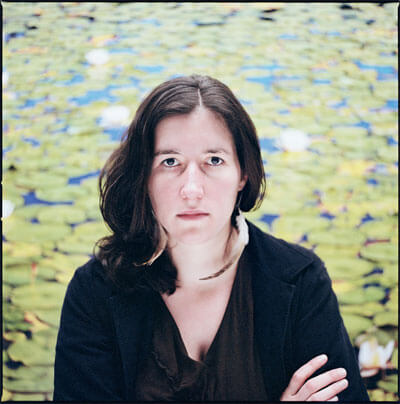Keliy Anderson-Staley was raised off the grid in Maine, studied photography in New York City and currently lives and teaches photography at the University of Houston in Texas. She earned a BA from Hampshire College in Massachusetts and an MFA in photography from Hunter College in New York.
Anderson-Staley’s tintype portrait work was awarded a New York Foundation for the Arts Fellowship and a Puffin Grant. She participated in the Bronx Museum AIM residency program in 2007, the Light Work residency and fellowship in 2010, and the Bakery Photo Collective in Westbrook Maine in 2012. She received a grant in Summer 2011 to prepare a solo exhibition of her series of tintype portraits [hyphen] Americans at Light Work in Syracuse, NY. Her color series about back-to-the-landers in Maine,
Off the Grid, was one of five runners-up for the
Aperture Portfolio Prize (2009).
Off the Grid received the grand prize at the Joyce Elaine Grant exhibition in Denton, TX in 2009 and the Arthur Griffin Award from the Griffin Museum of Photography in 2010. The project was also a finalist for the Duke Center for Documentary Studies/Honickman First Book Prize in 2008. She also recently received funding for her project, Imagined Family Heirlooms via Kickstarter, a crowd-funding website in 2011.
Her photographs are in the permanent collections of the
Library of Congress,
Akron Art Museum,
Cedar Rapids Museum of Art,
Portland Museum of Art (Maine), and
Museum of Fine Arts, Houston. She was the recipient of a New York Foundation for the Arts Fellowship, a Puffin Grant, a fellowship from the Howard Foundation and the Carol Crow Fellowship from the Houston Center for Photography. Her work published in a solo issue of Light Work’s Contact Sheet and has been shown at the
National Portrait Gallery of the Smithsonian, Portland Museum of Art, Akron Art Museum,
Bronx Museum of Art,
Southeast Museum of Photography and the
California Museum of Photography, as well as at a number of galleries around the country.
Anderson-Staley has been making wet plate collodion tintypes and ambrotypes for ten years. Her fine art and editorial work has appeared in a number of magazines, including
Photo District News,
New York Magazine,
Art and Auction,
Hemispheres Magazine,
Camerawork,
Contact Sheet,
Conde Nast Traveler and
Esquire Russia. Online, her work has been featured on Flak Photo, Conscientious, Fraction Magazine, PetaPixel, Ahorn Magazine and Daylight Magazine. Her series of tintype portraits was published in 2014 under the title
On A Wet Bough by Waltz Books.
Source: Catherine Edelman Gallery
